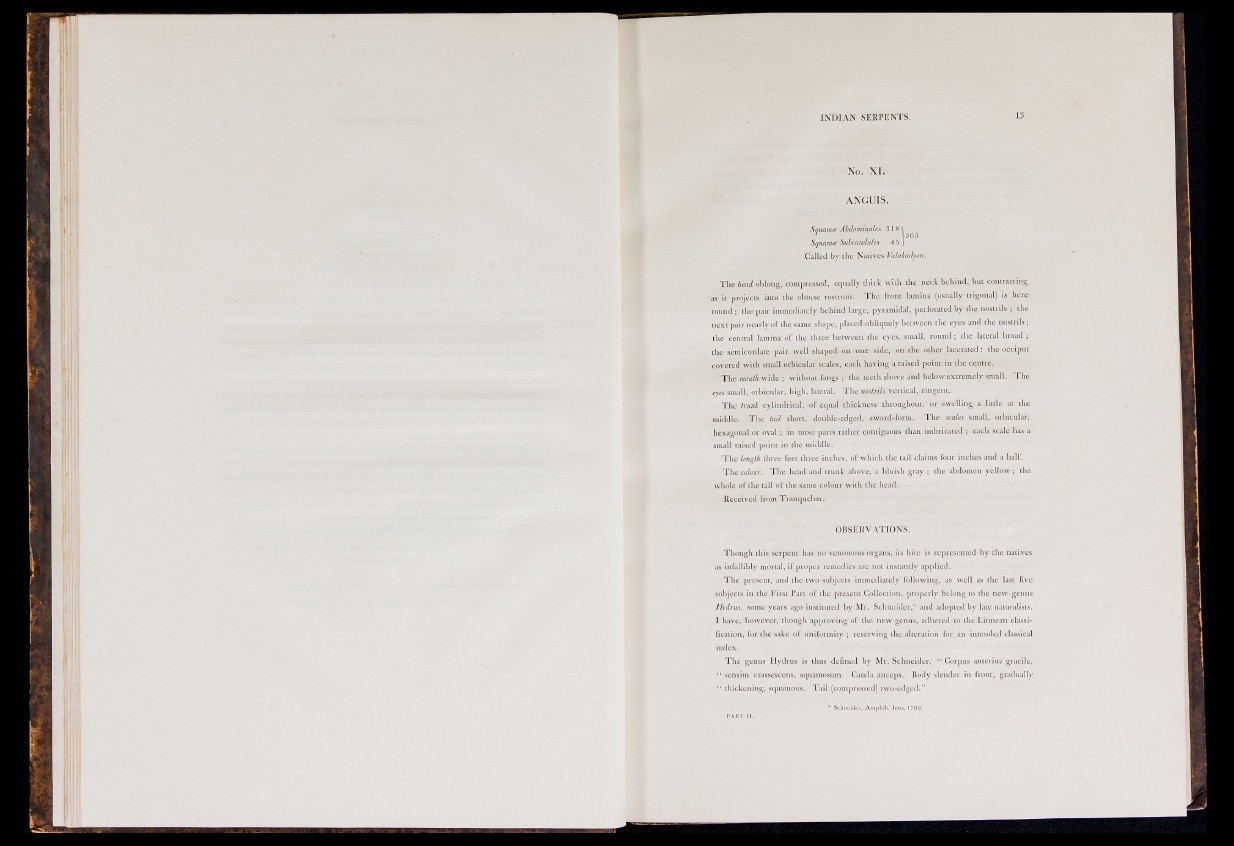
I N D I A N SERPENTS.
No. XI.
ANGUIS.
Smiavia Abdominales 3 1 8 "i
' 363
Squamre Siibcaudales 4 5 j
Called by tlie Natives Valaktdyen.
The head oblong, compressed, equally thick with the neck behind, but contracting
as it projects into the obtuse rostrum. The front lamina (usually trigonal) is here
round ; the pair immediately behind large, pyramidal, perforated by the nostrils ; the
next pair nearly of the same shape, placed obliquely between the eyes and the nostrils ;
the central lamina of the three between the eyes, small, round ; the lateral broad ;
the semicordate pair well shaped on one side, on the other lacerated : the occiput
covered with small orbicular scales, each having a raised point in the centre.
The ?Kmii/i wide ; without fangs ; the teeth above and below extremely small. The
eyes small, orbicular, high, lateral. The nostrils vertical, ringent.
The trunk cylindrical, of equal thickness throughout, or sweUing a little at the
middle. The tail short, double-edged, sword-form. The scales small, orbicular,
hexagonal or oval ; in most parts rather contiguous than imbricated ; each scale has a
small raised point in the middle.
The lenoih three feet three inches, of which the tail claims four inches and a half.
The colour. The head and trunk above, a bluish gray ; the abdomen yellow ; the
whole of the tail of the same colour with the head.
Received from Tranquebar.
OBSERVATIONS.
Though this serpent has no venomous organs, its bite is represented by the natives
as infallibly mortal, if proper remedies are not instantly applied.
The present, and the two stibjects immediately following, as well as the last five
subjects in the First Part of the present Collection, properly belong to the new genus
Hydrits, some years ago instituted by Mr. Schneider," and adopted by late naturalists.
I have, however, though approving of the new genus, adhered to the Linnean classification,
for the sake of uniformity ; reserving the alteration for an intended classical
index.
The genus llydrus is thus defined by Mr. Schneider, " Corpus anterius gracile,
" sensim crassescens, squamosum. Cauda anceps. Body slender in front, gradually
" thickening, squamous. Tail (compressed) t>vo-edged."
• Schnoidcr, Aniphll,. .Icir.i, ii99.